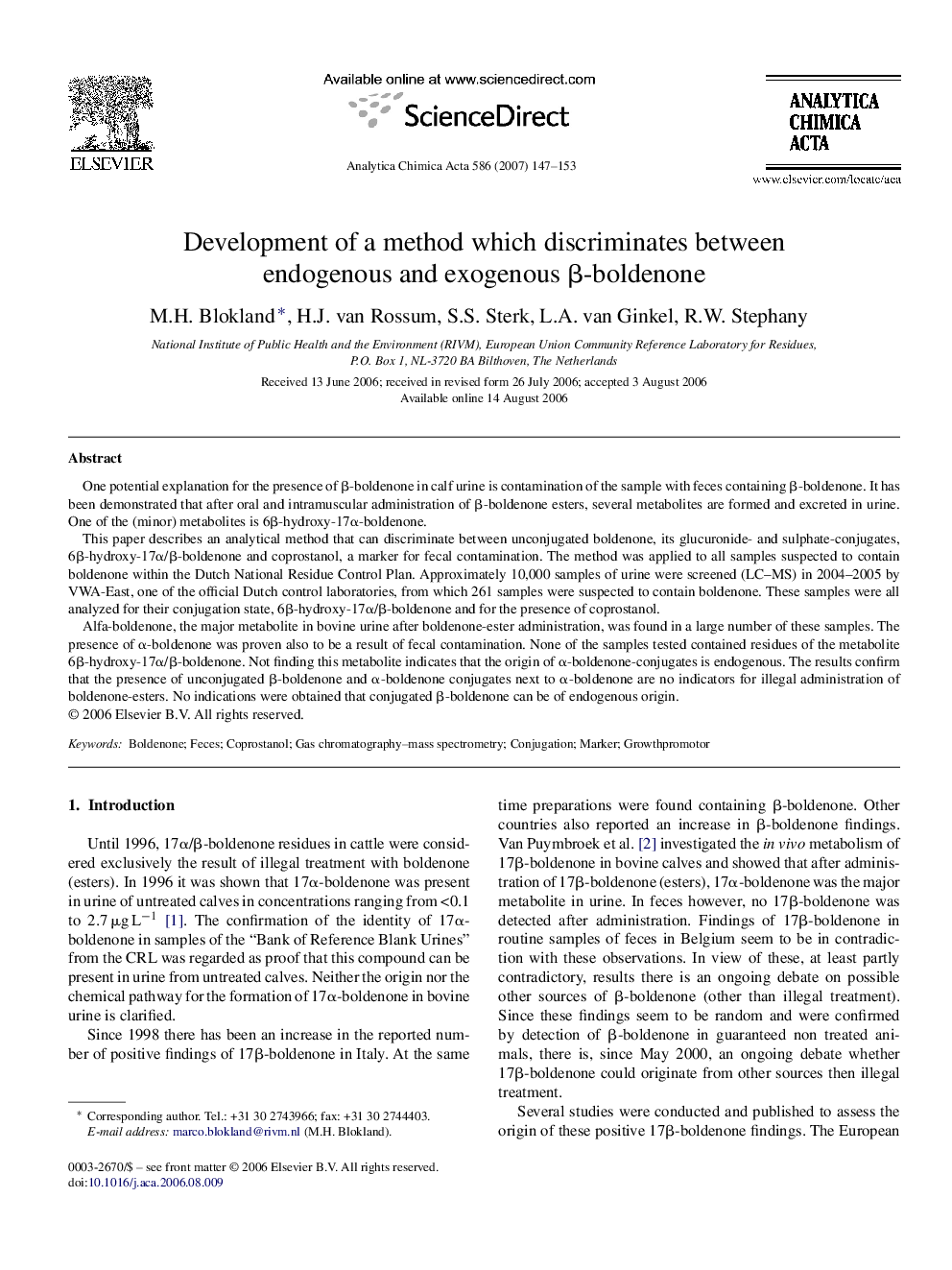| Article ID | Journal | Published Year | Pages | File Type |
|---|---|---|---|---|
| 1170687 | Analytica Chimica Acta | 2007 | 7 Pages |
One potential explanation for the presence of β-boldenone in calf urine is contamination of the sample with feces containing β-boldenone. It has been demonstrated that after oral and intramuscular administration of β-boldenone esters, several metabolites are formed and excreted in urine. One of the (minor) metabolites is 6β-hydroxy-17α-boldenone.This paper describes an analytical method that can discriminate between unconjugated boldenone, its glucuronide- and sulphate-conjugates, 6β-hydroxy-17α/β-boldenone and coprostanol, a marker for fecal contamination. The method was applied to all samples suspected to contain boldenone within the Dutch National Residue Control Plan. Approximately 10,000 samples of urine were screened (LC–MS) in 2004–2005 by VWA-East, one of the official Dutch control laboratories, from which 261 samples were suspected to contain boldenone. These samples were all analyzed for their conjugation state, 6β-hydroxy-17α/β-boldenone and for the presence of coprostanol.Alfa-boldenone, the major metabolite in bovine urine after boldenone-ester administration, was found in a large number of these samples. The presence of α-boldenone was proven also to be a result of fecal contamination. None of the samples tested contained residues of the metabolite 6β-hydroxy-17α/β-boldenone. Not finding this metabolite indicates that the origin of α-boldenone-conjugates is endogenous. The results confirm that the presence of unconjugated β-boldenone and α-boldenone conjugates next to α-boldenone are no indicators for illegal administration of boldenone-esters. No indications were obtained that conjugated β-boldenone can be of endogenous origin.
